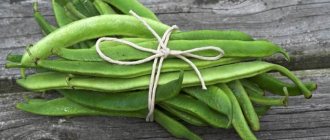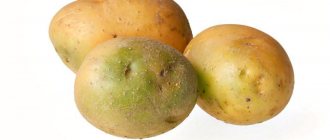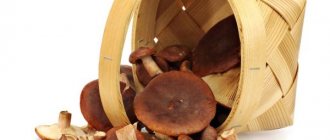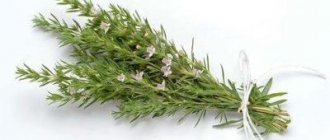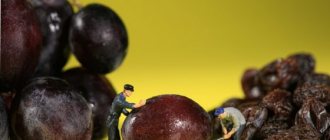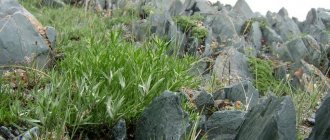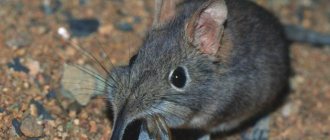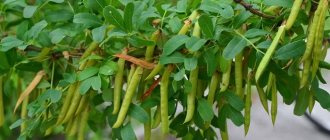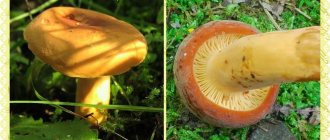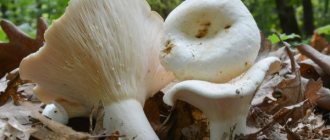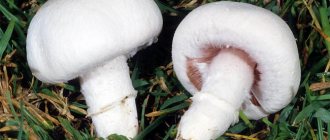To obtain healthy sprouts, you can germinate different crops; most often they use peas, lentils, rice, wheat, some take sunflower seeds, peanuts, and raw buckwheat. Spicy with a sweetish taste, sprouts are obtained from beans. It is important to remember that you cannot use ordinary red or white varieties for this, as this can lead to poisoning. Only adzuki beans and mung beans are suitable. Most often, sprouts are eaten by vegetarians and raw foodists, although it is useful for everyone who cares about their health.
Calorie content and chemical composition
In terms of calorie content, sprouts can be classified as low-calorie dishes (if consumed without adding sauces, oils, or heat treatment). With additional frying and adding seasonings, the calorie content increases. Raw 100 gr. contains 30-32 kcal. This product contains a full range of nutrients:
- proteins – 4.6 g. per 100 gr.;
- carbohydrates – 4.51 per 100 g;
- fats – 0.55 gr. per 100 gr.
At the same time, there is no cholesterol at all, but there is fiber, vitamins B and C. The minerals in the sprouts are phosphorus, calcium, iron, magnesium, copper, manganese, potassium, sodium and zinc. It also contains the most essential amino acids (more than 15) - valine, methionine, alanine, lysine, threonine, leucine, arginine, etc.
On a note! Due to its low calorie content and high nutritional content, sprouted mung beans can provide essential nutrients needed for health and nutrition. This is very useful for overweight people, as well as those undergoing rehabilitation.
What are the benefits and harms of sprouted beans for the human body?
Many people are surprised when they hear that bean sprouts are eaten. Few people know that this product brings invaluable benefits to the body . Sprouted beans are one of the main ingredients for raw foodists, as well as people leading a healthy lifestyle. Let's look at why sprouted beans are so beneficial and what contraindications exist for their use.
How to sprout beans
Before describing germination methods, it is worth noting that not all varieties of legumes are suitable for this.
For example, red or white beans should absolutely not be sprouted, as this can lead to severe poisoning. The best varieties for raw consumption are the angular Azuki bean and the Indian Mung bean.
In fact, these are the only types of legumes that can be sprouted. The sprouts of these varieties are spicy and sweetish in taste.
To germinate beans, take any container that is on the farm. It could be a plate, a glass, a bowl. In addition, you can buy a seed germinator at a specialty store. This is a convenient piece of equipment, but by no means necessary.
The only thing that raw foodists recommend purchasing for sprouting beans at home is a sprouter - a universal system designed not only for automatic irrigation of sprouts, but also for maintaining optimal humidity and temperature conditions. With such equipment, sprouting beans requires virtually no effort. You only need to change the water once a day.
If a sprouter is not available, you can sprout the beans by hand. In order for the sprouts to have a pleasant taste and fresh aroma, it is necessary to build the correct structure. To do this you need:
- Take two containers - one with a deep bottom, the other with holes, which will allow you to remove excess water.
- A sieve is suitable as a second container. Its bottom is lined with gauze, placed in a deep container and filled with Indian bean seeds.
- Then the mung bean is filled with water and left for a couple of hours in a dark and warm place.
- Water the beans every 3 hours. After 10 hours, the beans are washed and excess water is drained.
- The washed mung beans are left to germinate. It is important that this process is not accompanied by exposure to sunlight. Sprout beans only in a dark place.
A day later the first shoots appear. They can be eaten immediately, although some raw foodists prefer to leave the beans for a few more days and only then eat them.
Note! Sprouts that germinate for more than a day must be washed and dried. Otherwise, they will lose all useful components.
Immediately before using the sprouts, they are peeled and washed again. They eat only fresh sprouts. This product is not recommended to be refrigerated or frozen.
What beans contain - chemical composition, vitamins and microelements
Sprouted beans are low in calories. There are only 30 kcal per 100 grams of product. The composition of sprouted beans includes:
100 grams of product contains the daily dose of these ingredients.
Also, sprouted beans contain large quantities of B vitamins and vitamin C. The mineral components present in the composition are:
- magnesium;
- calcium;
- phosphorus;
- iron;
- zinc;
- sodium;
- copper;
- manganese and many other health-promoting microelements.
The composition of the product is so universal that the body will receive all the substances necessary for life, even if a person eats only sprouts.
Where is it used?
Bean sprouts are widely used in cooking. Most often they are added to fresh vegetable salads. It is worth noting that it has now become fashionable to prepare dishes that use sprouted beans. This is primarily due to the fact that more and more people prefer a healthy lifestyle.
Many will be surprised, but sprouted beans are also used in various baked goods. They make delicious sauces and first courses. The nutritional value of the product allows it to be used not only as one of the ingredients for a dish, but also eaten as a side dish for meat or fish.
Sprouts are also popular in folk medicine. They are used with particular enthusiasm in Asian countries. Sprouts less than 3 cm in length are consumed for the following conditions:
- obesity;
- hypertension;
- decreased immunity;
- atherosclerosis;
- heart diseases;
- diabetes.
In addition, sprouts are known for their anti-aging and anti-cancer effects. Regular consumption of sprouted beans will prolong youth and reduce the likelihood of cancer.
Nowadays, whole complexes of therapeutic nutrition are very popular. Special diets involve combining sprouted beans with buckwheat, wheat, oat sprouts, berries and medicinal herbal decoctions.
Before use, the sprouts are carefully sorted. Rotten and spoiled parts must be thrown away. Only juicy and crunchy parts of plants are eaten.
Sprouted beans - benefits and harms
Since ancient times, sprouts have been considered the richest food. These plants are rich in enzymes; their regular use improves the functioning of almost all organs and systems. But the usefulness of sprouted mung bean does not end there. It is used for weight loss and rejuvenation. Women who eat legume sprouts look much younger than their age.
Not only the condition of the skin improves, but also hair, nails, and teeth.
If you compare regular beans with sprouted beans, the latter contains three times more vitamin E and five times more vitamins B and C. About 50 grams of sprouts replaces six glasses of natural orange juice.
Sprouted beans can be combined with all foods. In this regard, it has no restrictions. The parallel consumption of berries, vegetables, and fruits is especially useful.
It is extremely beneficial to combine bean sprouts with wheat and oat sprouts. In addition, legume sprouts are used externally for lotions and compresses. This allows you to remove puffiness and swelling from the affected area.
The sprouts are also used for rheumatism, arthritis, and gout. The product is added to skin care products. Rejuvenating face masks are especially popular.
Thus, sprouted beans have the following effects:
- antibacterial;
- wound healing;
- anti-inflammatory;
- tonic;
- rejuvenating;
- anti-cancer.
But no matter how useful the product is, it is worth observing moderation. Its consumption in large quantities causes flatulence, decreased blood pressure, diarrhea and colic.
Contraindications
It is not recommended to consume sprouted beans for people with individual intolerance to the components of their composition. Caution is also necessary for chronic gastrointestinal diseases in the acute stage.
Since there is a possibility of sprout intolerance, caution should be exercised when first consuming. Initially, a small amount of sprouts is added to the food, after which the body’s reaction is observed.
If an allergic reaction occurs, use should be stopped. If there are no negative reactions, the number of sprouts added to food is subsequently increased.
But you shouldn’t abuse it, just like other products.
Source: https://dachamechty.ru/fasol/proroshhennaya.html
Bean sprouts - beneficial properties
Despite the unfamiliarity of such food for residents of the CIS, such nutrition has many advantages that can keep the body in good shape, preventing the development of some serious diseases. The phenomenon largely lies in the germination process, when due to the awakening of all nutrients at the time of growth, the content of vitamins and minerals increases tenfold. In the case of conventional cooking, beans contain significantly lower values.
Increased male potency
When the sprouts awaken, the protein content increases by almost 20% - this is useful for building muscle mass, and antioxidants and amino acids fill you with vital energy and give sexual power.
Strengthening the immune system
Thanks to vitamin C and saponins, which are part of mung bean sprouts, the body's resistance to infections increases by stimulating the work of interferons and leukocytes. Cell regeneration and healing processes are also accelerated.
Normalization of the digestive system
Water and fiber, which are abundant in sprouts, help the body remove waste products from the intestines, which prevents the absorption of toxic substances and serves as an excellent preventive measure for the development of cancer. Sprouts alkalize the body, restoring the acid-base balance. With no cholesterol, low fat and fiber, sprouted beans are ideal for those who need to lose weight or recover from a long-term illness or injury.
Prevention of osteoporosis, anemia
During germination, phytoestrogens are formed, which have a positive effect on bone tissue, compacting it and preventing the development of osteoporosis. By maintaining bone density and integrity, the risk of injury and internal damage is significantly reduced.
Sprouts also contain folic acid, which promotes the formation of amino acids and red blood cells. This has a positive effect on maintaining the optimal number of blood cells in the blood and prevents the development of anemia.
Methods for sprouting beans
Sprouting beans has many features. When choosing a specific method, it is important to consider the goals and objectives that are planned to be solved. Many people are interested in what exactly a bean sprout looks like. It resembles hatched seeds with small roots.
Germination of bean material for planting in the ground
For planting in open soil, beans can be sprouted in different ways. It is permissible to do this in a roll-up machine. It is also allowed to use peat pots or special containers.
In a rolled-up cigarette
This type of procedure requires the following:
- spread toilet paper on the film and sprinkle it with water;
- lay out the beans;
- place another layer of paper on top and moisten it;
- Roll up the film and lower the bottom edge into the water.
How harmful are sprouted beans, contraindications
Sprouted beans have disadvantages. The harm, like the benefit, is different for everyone. If a person has an individual intolerance to legumes or a period of exacerbation of gastrointestinal problems, it is better not to start eating sprouts. Problems can also arise from improper germination or too much consumption. In such cases, allergic reactions or bloating occur. Before serving, be sure to rinse the sprouts thoroughly, and during growth, monitor for the absence of mold or fungi.
If you have not tried eating sprouts before, you should introduce them into your food gradually, in small portions. After each dose, you need to monitor the body's reaction. In case of a decrease in blood pressure, flatulence, colic or diarrhea, you must stop using them.
Possible harm and contraindications
Although beans have many beneficial properties, they can be harmful in some cases.
The human body cannot absorb some of the carbohydrates contained in beans, which leads to flatulence. To reduce the content of these carbohydrates, beans must be soaked for several hours in water with the addition of soda before cooking.
A large amount of fiber contributes to increased gas formation, and the enzymes secreted by the pancreas cannot cope with it. Bacteria living in the intestines break down fiber, but at the same time release a lot of gases. As a result, a person suffers from flatulence. To prevent this from happening, you need to eat beans in moderation and cook them properly.
Raw beans can cause poisoning to the body. It contains such a toxic substance as phasin, but during heat treatment it disintegrates. Therefore, you need to be especially careful when eating sprouted beans. It can cause nausea, diarrhea, vomiting and other symptoms of intoxication.
Contraindications for eating beans:
- Gastritis with high acidity.
- Peptic ulcer of the stomach and duodenum.
- Colitis.
- Cholecystitis.
- Beans contain a large amount of purines, so they are not recommended to be included in the menu for people suffering from gout, so as not to provoke an exacerbation of the disease.
- Elderly age. This does not mean that you need to give up beans altogether, but older people most often have a reduced metabolic rate, so you need to be very careful when including this product on the menu.
Lactating women should use beans with caution, as they can cause bloating not only in an adult, but also in a child. Therefore, if your baby suffers from colic, then it is better to give up beans for a while.
Bean allergies are extremely rare. As a rule, it occurs in those people whose body gives a similar reaction to other legumes, for example, peas or lentils. If rashes appear, you should stop eating beans and consult an allergist.
How to sprout beans at home
First, you need to remember that only green mung beans and the adzuki variety are suitable for germination; ordinary white or red beans are dangerous to eat in this form; they require long-term heat treatment. If you are determined to eat sprouts regularly, you can buy a special sprouter with an automatic irrigation system that maintains temperature and humidity levels. It will make the process as simple and fast as possible.
If you are still a beginner, any deep container will do - a bowl, a salad bowl, a bowl, it all depends on the amount of base. There are many ways with gauze, trays, a drainage system, and constant fluid changes. Everyone chooses what is convenient for them, we offer one of the simplest and fastest ways:
- The beans are washed, sorted, and the halves, dry and spoiled, are removed.
- Soak for 6-12 hours, filling completely with cold water. Leave at room temperature.
- When the beans swell and increase in size, drain the water and rinse under running water.
- Transfer to a food-grade plastic container, cover with a lid, and leave overnight (without filling with water, there will be enough moisture inside).
- In the morning, small sprouts of 1-2 mm are already sprouting, which can be consumed.
The longer the container sits, the longer the seedlings will be; you can even grow them into tall grass. Every day it is necessary to ensure that mold does not appear inside and fermentation does not begin. To do this, the mung beans must be washed periodically with running water. When it is necessary to stop growth, the contents are carefully washed, covered with a lid, and placed in the refrigerator.
On a note!
You shouldn’t soak a large amount at once; it’s better to do it in small portions so that the sprouts don’t disappear. If washed regularly, it can be stored in the refrigerator in a closed container for no more than 7 days. Some people do not recommend storing at sub-zero temperatures at all, suggesting that you eat the entire batch at once.
Where is it used?
Most often, sprouts are added to salads - it’s quick, tasty, and healthy. But with constant use, you will want to experiment, so they are added to sauces, soups, dressings, smoothies, fruit cocktails, sprinkled on sandwiches, and served as a side dish. There are no strict restrictions in combination with other products, you can use anything you like - with meat, fish, vegetables, cereals, mushrooms, nuts, sesame seeds, berries, fruits.
Some lovers and raw foodists can easily do without additions, simply consuming the sprouts separately in their raw form. If they are subjected to heat treatment, the cooking time should be minimal so that the beneficial substances are not destroyed by high temperature.
While the sprouts are small, you can dry the beans, grind them in a coffee grinder and use them as flour or an additive to other flour dishes - pancakes, pancakes, bread, diet sandwich bread.
In Asia, sprouted beans are used not only for food, but as a traditional medicine for various complications (for this you need to take only those with sprouts less than 3 cm):
- high blood pressure;
- weak immunity;
- atherosclerosis;
- cardiovascular diseases;
- diabetes;
- obesity.
On a note!
Perhaps it should not be combined in only two cases - with dairy products and honey. In the first situation, flatulence is possible, in the second, if you do this often, an allergy or fermentation process in the intestines may occur.
How to eat sprouted bean sprouts: recipes
For those who do not want to spend a lot of time on preparation, but want to preserve the taste and benefits as much as possible, salads are suitable. One of the best recipes in French cuisine is spinach salad.
Spinach salad
To prepare you will need:
- 4 cups sprouts;
- 8 cups fresh spinach leaves;
- 250 gr. pickled champignons;
- 1 bell pepper (preferably red).
For the sauce you need:
- olive oil – 50 ml;
- rice vinegar – 50 ml;
- tamari sauce – 50 ml;
- maple syrup – 50 ml;
- ground black pepper – ¼ tsp;
- garlic – 1 clove, finely chopped;
- grated ginger – 1 tbsp. l.;
- salt - to taste.
May be interesting Asparagus beans: how to properly grow them yourselfAsparagus beans: features, varieties, description, photos How to quickly germinate beans: preparing seeds and methods of germination
How to cook:
- Wash the spinach and peppers and cut into narrow strips.
- Cut pickled mushrooms into thin slices.
- Separately mix all the sauce ingredients until a homogeneous consistency is obtained.
- Season with sauce, you can sprinkle with sesame seeds.
- Served to the table.
At first, some find it difficult to perceive the unusual taste of sprouts, so they prefer to cook dishes with a lot of sauce, stew or fry. The main thing to remember is that cooking should not be long, the effect of temperature should be minimal.
